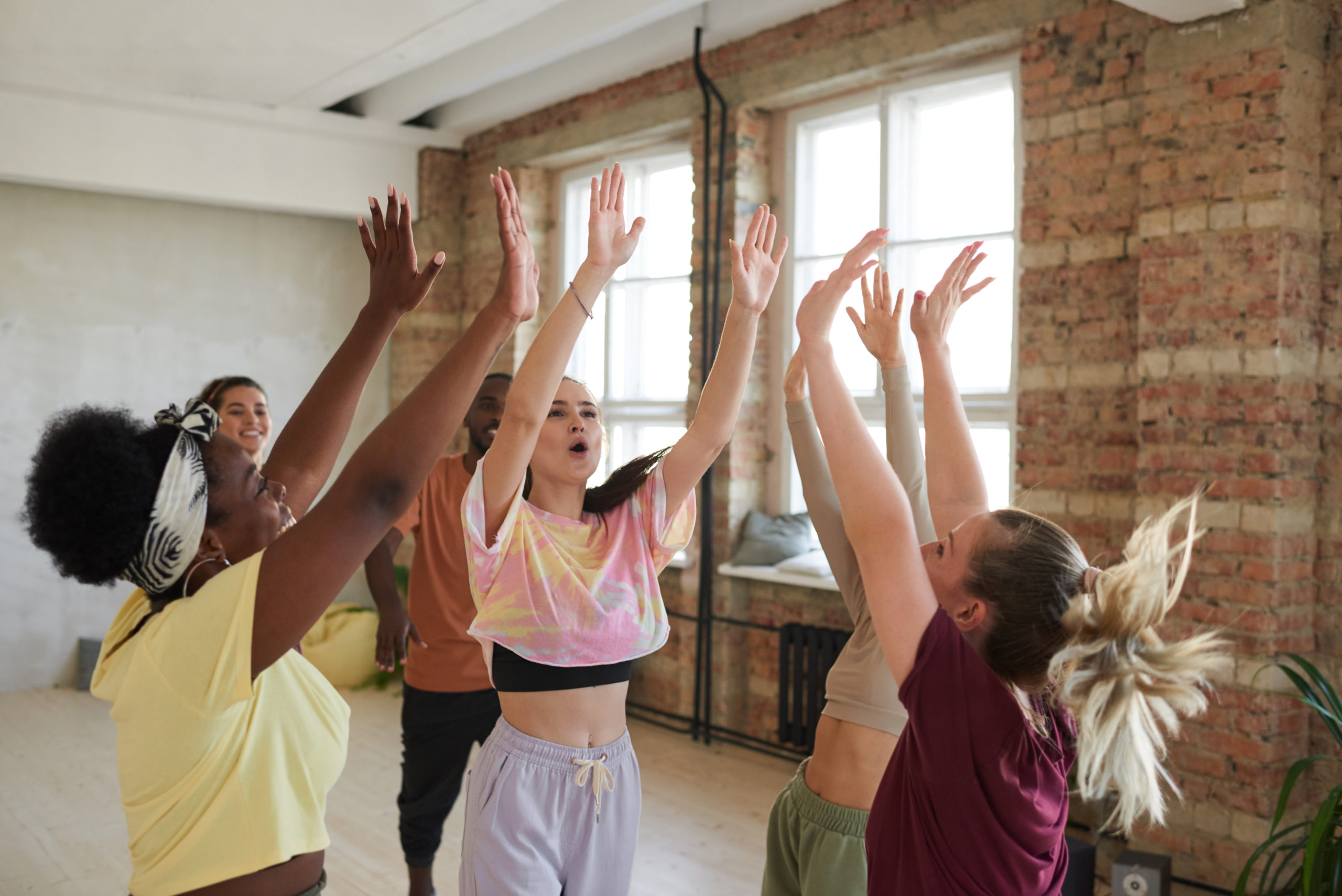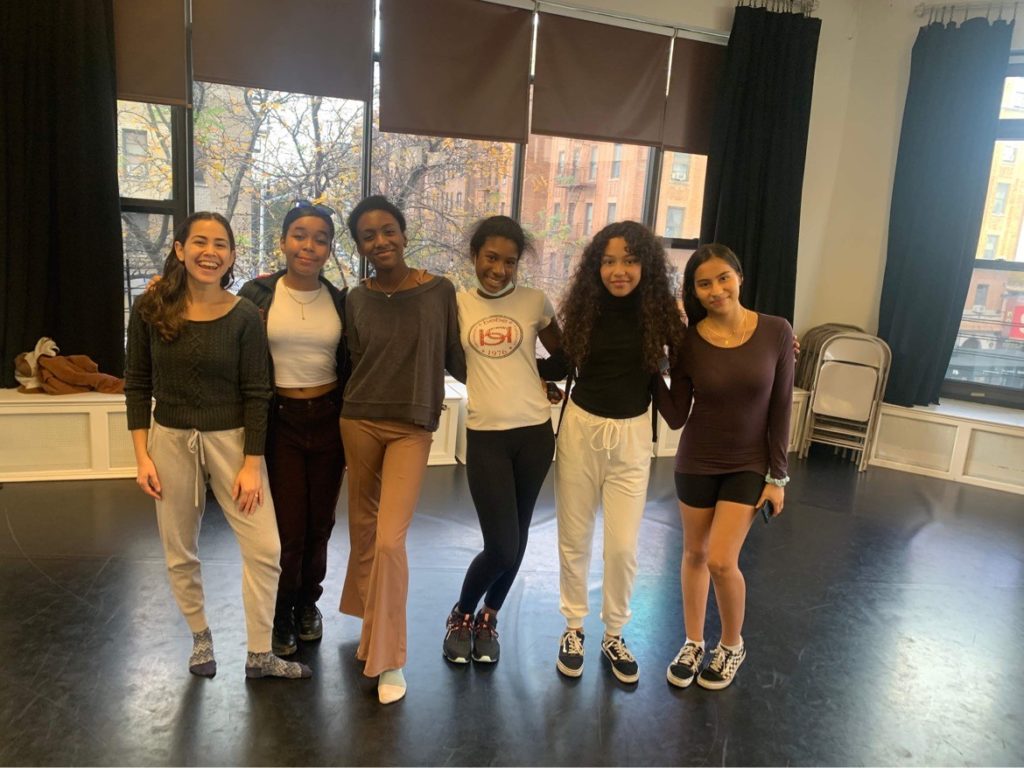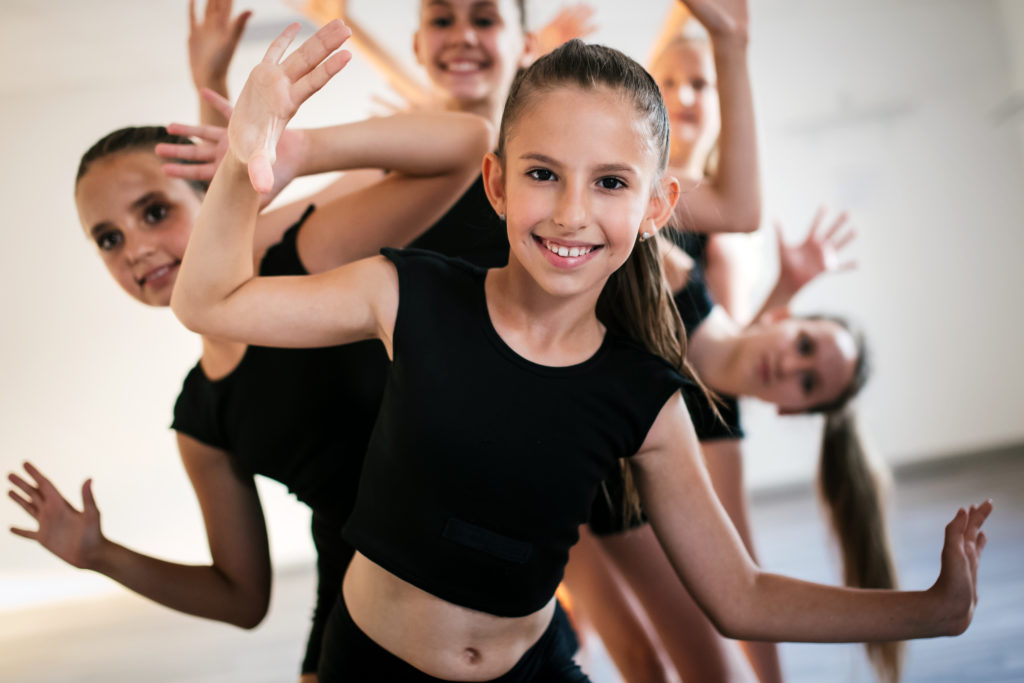
You’re about to teach a brand-new dance class and are super excited. You have a rocking new playlist and can’t wait to teach your students the new combination you’ve choreographed.
But then the unfortunate happens. Your students enter the studio sulking. Their body language screams “I’m too tired” or “I’m too cool.” Some students cross their arms and clump together with their friends. Others stand nervously in the back and don’t make eye contact. Suddenly your excitement drains and your upbeat energy begins to fade. You’re now dreading the hour-long class that lies ahead of you.
We’ve all been in a situation like this—when your energy feels dictated by the mood of your students. But there are a few ways to tackle this challenge. Sarah Panayiotou Leñador, who teaches contemporary dance, composition and dance performance techniques to ages 12 to 18 at the BABEL Mentorship Program (an organization she founded to help develop the social, emotional and artistic growth of low-income students and young dancers of color), has a motto/metaphor that she uses: “Be a thermostat, not a thermometer.”
In other words, Leñador suggests that dance teachers are the ones who set the temperature, energy and atmosphere of the room. They decide if the class will be upbeat and lively, or reflective and calming. Students then become the thermometer, taking on the energy that has been set.
Here are a few tips to make this metaphor a reality.

It Begins With You
Dance teachers care deeply for their students, and Leñador admits to this herself: “I can be very empathetic and in tune with other people’s feelings. I even started taking on my students’ feelings but had to realize that those weren’t my own.”
One of the best ways she shows care for her students is by redirecting their energy. Using both her energetic body language as well as open communication, Leñador helps her students see that they could be upset about something that happened outside of class and still be happy to be in class. “I need to decide what I want my classroom to look and feel like,” Leñador says. “And it starts with me and not with the students.”
Openly Communicate With Your Students
Set the tone for your class right away. Leñador takes two minutes at the beginning of every class to establish a safe space. She reminds her students that the classroom is a place where their feelings and bodies will be respected. “Often when students feel like they aren’t going to be respected is when negativity can occur,” she explains.
Sometimes she turns this into an open discussion: “I’ll tell them to raise their hand if they are feeling stressed or angry and let them know they are not alone.” Most of the time, Leñador finds that her preteen students are tired and stressed because of school, and they just want to be heard and feel seen. She reminds them that showing up is an accomplishment, and she goes a step further to help them determine what goals can still be accomplished that day in dance class despite feelings of being stressed or tired from school.
After taking the time to check in with how her students are feeling, Leñador feels confident about being able to channel those feelings in a productive way.
Redirect Negative Energy
You may find every now and again that the temperature in the studio needs to be redirected—sometimes midway through the class. If you hear negative comments that add to an energy you don’t want in your class, such as “This is way too hard” or “I can’t do that,” it’s important to intervene and address this in a positive manner. You can encourage the class as a whole by saying, “I know this new step looks tricky, but I know you’ll get it.” Or help them find a solution by asking, “How can I help you? Would you like to go over it again?”
Leñador recently had a situation in a class where everyone was stretching in a deep lunge. She offered an option to the students to take the stretch further if they were able to. All but one did so, which resulted with the well-intentioned students responding with “Oh, come on, you can do it!” Leñador kindly reminded the class that everyone’s body is different and this student knows her body and was stretching her body correctly. In addition to redirecting the energy, Leñador also aims to inspire her students to push themselves.

Refocus Yourself
Sometimes you can perceive the energy your students give off as disapproval of you or of the class. When you find you are being let down by your students’ energy, take a second to check in with yourself. Leñador recommends taking a breath or a sip of water, or just repeating a mantra that makes you feel confident. She also poses questions to herself, such as “Why am I feeling this way? Is this because of my students or something that happened earlier in the day?” Checking in with yourself can allow you to continue with the energy you hope to set for the rest of your class.
Get on Your Students’ Level
It’s helpful to recognize what gets your students excited or what gets them into the type of energy you want in class. It may take changing up your regular teaching routine to include some new steps they have seen online or on shows like “So You Think You Can Dance,”or incorporating popular music that they can listen to in class.
Leñador once noticed her students doing a TikTok dance to a song she had on her playlist. Seeing their enthusiasm, she told them that they could teach her the TikTok dance at the end of the class. The students were thrilled because not only did they get to share something they loved, but it also gave them the experience of teaching someone else. “It’s me, as the teacher, entering their world, but still setting the temperature,” Leñador says.
Setting the temperature of your classroom can be a challenge. It takes thoughtfulness and effort, but it is worth it when the outcome is a more enjoyable, productive classroom for both your students and yourself.





